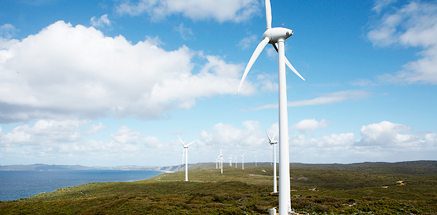Australia’s renewable energy war of numbers continues, with the release of a new report suggesting that inaccurate economic modelling used by the federal government’s RET Review Panel could lead to a significant understatement of the level of renewables required to meet a 20 per cent by 2020.
The report, released on Tuesday by Green Energy Markets, finds that the modelling provided to the panel by consultants ACIL Allen – appointed for the job by the RET Review Panel’s climate sceptic head, Dick Warburton – has significantly overestimated the level of pre-existing renewables in Australia.
Ric Brazzale, author of the report, says that ACIL Allen – whose modelling determined that, to achieve a real 20 per cent market share for renewables by 2020, the currently legislated 41,000 GWh target should be reduced to 25,500 GWh – worked from a baseline of 16,148 GWh for existing generation – a figure, Brazzale says, that has come from unclear origins, and is at least 2,669GWh higher than the actual figure, 13,479 GWh.
“This is a material over-statement and is equivalent to an additional 871 MW of renewable generation (assuming 35 per cent capacity factor),” Brazzale writes in the research note.
“In simple terms, to determine the level of the mandated target we need to exclude renewable generation that does not create Large-scale Generation Certificates (LGCs) under the scheme, the so called ‘pre-existing’ renewables,” he says.
“Using actual renewable generation for pre-existing projects would arrive at a target in excess of 28,000 GWh by 2020,” says Brazzale. Indeed, according to GEM’s modelling, for Australia to achieve a 20 per cent market share of renewable energy in 2020, the Mandated Renewable Energy Target would need to be 28,324 GWh.
With renewable generation projects that have already been built, or are under construction, accounting for 14,500GWh, this leaves at least another 13,824 GWh worth of projects to be built by 2020 to meet a 20 per cent target, says Brazzale – as opposed to the 11,000 GWh recommended by ACIL Allen.
As we have noted before on RenewEconomy, conflicting modelling has been at the centre of the debate over the future of Australia’s renewable energy target.
On one side, a range of independent consultants including Bloomberg New Energy Finance and Schneider, say that the RET is a good thing and delivers benefits. According to their modelling, scrapping it would push customer bills higher, and achieve little but the ongoing protection of the incumbent industries.
On the other side, consultants like ACIL Allen – whose reports are used by those incumbent fossil fuel generators, like EnergyAustralia, to argue for a big reduction in the RET – say the opposite; that it is the consumer, not them, that will be the biggest victim of the current RET policy.








